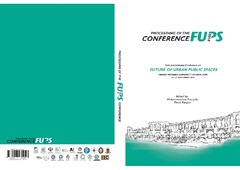Приказ основних података о документу
How to adapt the research of public space to enhance cultural tourism: the case of Golubac town in Iron Gate Gorge, Serbia
| dc.creator | Djukić, Aleksandra | |
| dc.creator | Antonić, Branislav | |
| dc.creator | Joković, Jugoslav | |
| dc.date.accessioned | 2020-06-13T16:31:36Z | |
| dc.date.available | 2020-06-13T16:31:36Z | |
| dc.date.issued | 2019 | |
| dc.identifier.isbn | 978-600-7589-94-6 | |
| dc.identifier.uri | https://raf.arh.bg.ac.rs/handle/123456789/917 | |
| dc.description.abstract | Cultural tourism has become an important driver for local socio-economic development. Therefore, it has a profound reflection into urban space and inevitably influences urban planning and design. Nevertheless, convenient approaches to research and plan cultural tourism is insufficiently resolved field. A special challenge in this approach is the situation with fast development of cultural tourism. It makes a pressure to general spatial development and, in particular, for open public spaces, heavily used by the rising number of cultural tourists. This paper proposes three innovative methods for the research how cities and towns can study and plan its space in line with rising cultural tourism. The first method is the customised theory of city image, developed by Kevin Lynch, where the attitudes of both local people and cultural tourists towards cultural-tourism led open public spaces are examined and compared. Then, the second approach is based on the research of the systematisation and spatial distribution of stakeholders involved in culturaltourism sector. The last used method is the investigation of social networks – Tweeter and Instagram – that have become very important indicators of newer trends globally. All named methods are new in Serbian urban-planning context. The aim of this paper is to show how they can be used for the upgrading of future policy documents for open urban spaces in Golubac Town. This small town in Eastern Serbia is a typical example of a place with recently booming cultural tourism. Golubac is located at the riverside of the Danube River, the second longest river in Europe. The lower part of river has become a major tourist route only recently, bringing the immense inflow of (cultural) tourists in this region. Nevertheless, the linear character of the route and the inherited weakness of Golubac economy have limited the boom of cultural tourism to the main tourist attractions in Golubac area, leaving local community without bigger benefits. Hence, this paper intends to analyse the intersections between cultural tourism and open public spaces in Golubac by the mentioned methods to improve ordinary urban planning and design. | sr |
| dc.language.iso | en | sr |
| dc.publisher | Tehran : Tarbiat Modares University | sr |
| dc.relation | info:eu-repo/grantAgreement/MESTD/Technological Development (TD or TR)/36034/RS// | sr |
| dc.relation | info:eu-repo/grantAgreement/MESTD/Technological Development (TD or TR)/36035/RS// | sr |
| dc.rights | openAccess | sr |
| dc.source | FUPS 2018 First International Conference on Future of Urban Public Space, Tehran, Iran | sr |
| dc.subject | Open public space | sr |
| dc.subject | Serbia | sr |
| dc.subject | Social networks | sr |
| dc.subject | Cultural tourism | sr |
| dc.subject | Tourist destination | sr |
| dc.subject | Golubac Fortress | sr |
| dc.title | How to adapt the research of public space to enhance cultural tourism: the case of Golubac town in Iron Gate Gorge, Serbia | en |
| dc.type | conferenceObject | sr |
| dc.rights.license | ARR | sr |
| dcterms.abstract | Јоковић, Југослав; Aнтонић, Бранислав; Дјукић, Aлександра; | |
| dcterms.abstract | Aнтонић, Бранислав; Јоковић, Југослав; Дјукић, Aлександра; | |
| dc.rights.holder | Tarbiat Modares University | sr |
| dc.citation.spage | 371 | |
| dc.citation.epage | 382 | |
| dc.identifier.fulltext | https://raf.arh.bg.ac.rs/bitstream/id/2674/12_FUPS18_Djukic_Antonic_Jokovic.pdf | |
| dc.identifier.rcub | https://hdl.handle.net/21.15107/rcub_raf_917 | |
| dc.type.version | publishedVersion | sr |

